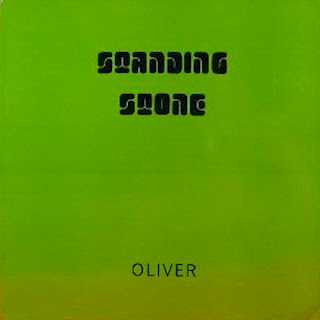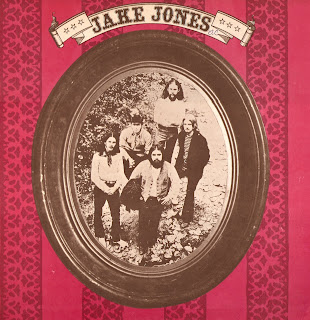
On a purely musical level,
Ginger Baker's Air Force were arguably the pinnacle of the legendary drummer's achievements of the 1960s. Even allowing for the many and varied virtues of
the Graham Bond Organisation,
Cream, and
Blind Faith, they didn't approach the breadth or ambition that characterized the
Air Force sound. Sadly, despite their prodigious musical attributes,
Ginger Baker's Air Force are mostly remembered in the music business as one of the great nonstarters among the heavily press-hyped supergroups of the late '60s and early '70s.
Air Force essentially grew out of
Ginger Baker's six-month stint with
Blind Faith, a supergroup that collapsed after generating one album and finishing one tour.
Baker's ex-
Cream bandmate
Eric Clapton abandoned that venture in favor of the vastly different (yet more rewarding) musical styles of
Delaney & Bonnie, but
Baker persuaded
Steve Winwood and
Rick Grech, the other members of the band, to stay on with him.
Baker planned to put together a new band that would explore music on a new scale, and in new directions, different from
Blind Faith or
Cream -- the projected band, christened
Air Force, would embrace jazz, R&B, blues, folk, and African music.
Baker's old bandmate
Graham Bond came aboard on saxophone, joined by legendary jazz drummer
Phil Seaman, whom
Baker regarded as a mentor and inspiration, along with
Traffic's
Chris Wood, and
Harold McNair, both on sax and flute. As a guitarist and singer, the new group featured
Denny Laine, the former lead singer and guitarist of the original
Moody Blues. Singer
Jeanette Jacobs and African percussionist
Remi Kabaka were also in the lineup that played two extraordinary gigs at Birmingham's Town Hall and London's Royal Albert Hall at the end of 1969.
Baker's initial plan hadn't extended beyond the two shows, but the first one was so successful musically and critically that he began laying bigger plans, including the recording of the Albert Hall show and keeping the band going. By January of 1970, events were starting to break both inside and outside of the band that would have a profound effect on its future. The reviews from Birmingham were so good that the Albert Hall show turned into one of those press events that became the talk of the entire music trade in England and, by extension, America. The fact that the show had been recorded made it even better -- there was proof on hand that the press enthusiasm was justified. Those Albert Hall recordings were extraordinary,
Air Force thundering along amid blazing sax, organ, guitar, and bass virtuosity, fiery solos, and extended jams that, for a change, actually went somewhere, while three percussionists who seemingly were busy all the way through played several layers of rhythm. At its best, and the Royal Albert Hall tapes were their best,
Air Force's music was like this wonderful huge array of Chinese boxes, each opening to a smaller but more beautifully ornate box inside.
The live album
Ginger Baker's Air Force was issued by Polydor in Europe and Atlantic Records in America. In keeping with the excesses of the times,
Ginger Baker's Air Force was a double LP, an extraordinary debut for a band that had yet to play a regularly scheduled concert. Devised with artwork that seemingly reversed the design of the
Cream Wheels of Fire double set, and released amid extraordinary press, the live album reached number 33 in America and 37 in England, a long way from
Cream or
Blind Faith's chart-scaling days, but not bad (or, at least, it wouldn't have been if Atlantic, in particular, hadn't pressed hundreds of thousands of copies more than would ever be needed, which turned
Ginger Baker's Air Force into a perennial bargain-bin cutout in America) for a group that had only played two gigs. Those were the days of supergroups and all-star jams, all of them heavily advertised and discussed in the rock press, and
Air Force, in contrast to a lot of their rivals, delivered the goods.
The biggest problem facing the group, however, was that three key members,
Steve Winwood,
Rick Grech, and
Chris Wood, left -- as
Baker knew they had to -- in early 1970.
Graham Bond took over on organ and vocals for
Air Force, and new members
Steve Gregory and
Bud Beadle joined on saxes, while
Colin Gibson took over on bass.
Neemoi Acquaye came in on African percussion, and
Catherine James,
Aliki Ashman, and
Diane Stewart sang. It was
Baker's plan to be an old-style bandleader in the traditional sense, opening up
Air Force to experimentation by the bandmembers while he hung back, concerning himself as much as possible with the drums. He hoped to play a role akin that which
Count Basie or
Duke Ellington did in their respective bands, with his members. The problem was that keeping an 11-piece group going was a difficult and expensive proposition under the best of circumstances, and without a hit single or a hugely successful album to their credit, it proved impossible for
Baker and
Air Force. In addition, bands like
Basie's supported themselves by getting lots of outside work, supporting singers on record and in concert, even touring as part of rock & roll shows in
Basie's case in the late '50s, to keep the money coming in around their less lucrative gigs; that was clearly not a role that
Air Force were ever going to play. And
Ellington had income from his huge and vastly successful songwriting catalog to guarantee him the money needed to sustain the band during the lean times, if there were any.
Baker, by contrast, had only a tiny smattering of songs to his credit, none of them very successful on their own terms except to the degree that the
Cream and
Blind Faith catalogs kept selling. And then there was the American tour.
The assumption, based on the media blitz out of England, was the
Ginger Baker's Air Force would be another
Blind Faith, an arena act whose tickets would disappear as fast as they were put on sale. In point of fact, the new group was two or three times more complex musically than
Blind Faith and a lot more surprising. Without
Eric Clapton or at least
Steve Winwood in the lineup with
Baker, however, and without a single that clicked as a popular track on the radio, it was discovered that
Air Force were a phenomenon that many potential ticket-buyers could pass up. The tour was in trouble from the start, and it got worse as advance ticket sales to vast halls were far below what anyone anticipated. The whole thing collapsed just about the time that the group was completing its second and final album. By the end of 1970, after a short tour and a very short spurt of press interest in
Air Force 2 -- which had some rewarding moments, but was really little like the first album -- the second album disappeared without a trace, as did
Air Force.
Baker went on to a career as a solo artist, starting with
Stratavarious the following year, which featured a far smaller band and was much more steeped in African rhythms, while
Laine joined
Paul McCartney's new group
Wings and, after a rough start for the group, did a decade of arena shows and became a household name.
Ginger Baker's Air Force lingered in the memory for one great album and one decent album, but also as a classic non-event. Their final indignity came in 1972 when
the National Lampoon released their comedy album
Radio Dinner, one highlight being a commercial for "Greatest Hits of the '60s," with (supposedly)
Bob Dylan as the announcer hawking it and
Blind Faith and
Ginger Baker's Air Force as two of the specific groups mentioned as being on the K-Tel-type record. In the late '80s, Polygram reissued the live album on CD, and that record,
Air Force 2, and
Stratavarious were later combined into a double CD entitled
Do What You Like. AMG.
listen here
 The follow-up to Caught Up came hot on its heels (the same year, in fact), offering a few more songs from the same mold -- Jackson's tough performances of songs charting the vagaries of modern love. There wasn't much of a concept at work here, despite a set of situation songs that would've fit well, including "One Night Stand," "How Do You Feel the Morning After," and best of all, a pair of classic Don Covay compositions ("Watch the One Who Brings You the News" and "A Letter Full of Tears"). Producer Brad Shapiro went for more of a blaxploitation feel on this record, which fit in well with the dominant emotion (mistrust) as well as Jackson's raw delivery. Other highlights include the outré "My Love Is So Fly" and her self-penned "I Got to Try It One Time," which became an R&B hit. AMG.
The follow-up to Caught Up came hot on its heels (the same year, in fact), offering a few more songs from the same mold -- Jackson's tough performances of songs charting the vagaries of modern love. There wasn't much of a concept at work here, despite a set of situation songs that would've fit well, including "One Night Stand," "How Do You Feel the Morning After," and best of all, a pair of classic Don Covay compositions ("Watch the One Who Brings You the News" and "A Letter Full of Tears"). Producer Brad Shapiro went for more of a blaxploitation feel on this record, which fit in well with the dominant emotion (mistrust) as well as Jackson's raw delivery. Other highlights include the outré "My Love Is So Fly" and her self-penned "I Got to Try It One Time," which became an R&B hit. AMG.

























